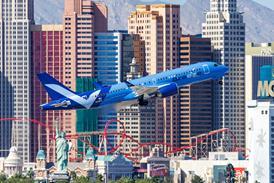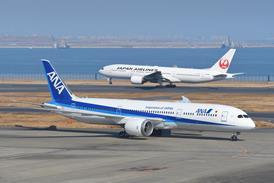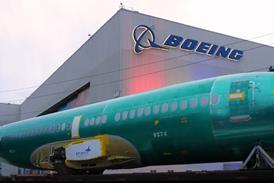MICHAEL PHELAN / LONDON
NASA has launched studies into reducing the risk of centre fuel tank explosions in commercial airliners. The studies were conceived in the wake of the TWA Boeing 747-100 that suffered a catastrophic fuel tank explosion in July 1996.
The programme aims to develop systems that fill the empty space above the fuel, called "ullage", with inert nitrogen gas. The ullage on today's commercial aircraft contains a potentially flammable mixture of fuel vapour and ambient air.
NASA's Glenn Research Center (GRC) has awarded contracts to four US companies and plans to test ground-based demonstrators by the third quarter 2004. The project is part of NASA's Aviation Safety Programme led by Langley Research Center, with Boeing's Phantom Works advising on system performance requirements, certification and airframe integration.
The study focuses on pumping nitrogen generated onboard the aircraft into the centre tank, which is more likely to experience high temperatures due to adjacent aircraft systems. Acting manager of the Accident Mitigation Project at GRC Bob McKnight says: "Enriching the air with nitrogen so that the oxygen content drops to 8-10% by volume would remove the flammability risk."
The four companies awarded five-month contracts totalling $400,000 - New Hampshire-based Creare Engineering; Essex Cryogenics of Missouri; Honeywell Environmental Controls Systems in California; and New Jersey-based Valcor Engineering - will examine oxygen/nitrogen separation technologies and turbocompressors to pump nitrogen-enriched cabin air into the fuel tank.
Military aircraft already use nitrogen or halon to inert tanks, reducing the risk of explosion. Although the US Federal Aviation Administration is trialling this on a Boeing 747SP ground test rig, McKnight says "equivalent systems would be too costly on commercial aircraft".
Central to any viable commercial system are hollow fibre membranes (HFMs), which can separate the gases in air pumped through them. Work is proceeding on developing high-temperature HFMs fed by bleed air from the engines, and using turbocompressors to pump cabin air through the HFMs, avoiding the difficulties of managing high-temperature bleed air. "There is a trade-off between bleeding air from the engine, and taking electrical power for the turbocompressors," explains McKnight.
Phase 1 leads to system demonstrator designs and, if successful, Phase 2 will demonstrate ground-based working systems in 2004.
Source: Flight International























